- How to Propagate Monstera Guide: The Three Ways to Succeed - September 17, 2021
- Escargot Begonia: Why Is The Rex Begonia So Rare? - August 31, 2021
- Rieger Begonia: When You Can Expect The Hiemalis Begonia To Flourish - August 31, 2021
Pilea Microphylla is a herbaceous perennial plant that is native to tropical areas of South and Central America. It is a very good choice to grow as ground cover in a garden or as a vining plant in a hanging plant container. No matter where you choose to plant an Artillery Plant, you are sure to have a lovely piece of landscaping décor.
How to Identify Artillery Plant
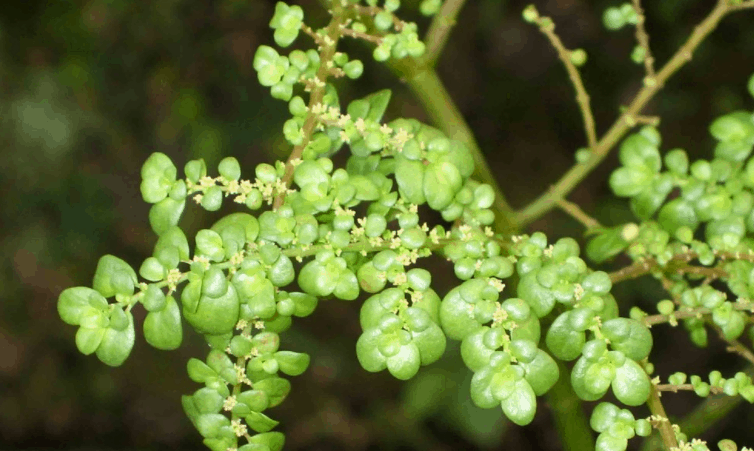
While this plant is not a showy and flowering choice, it does have some cute and quaint features. When identifying an Artillery Plant, look for these key features:
- Leaves that are oval in shape
- Leaves that are a vibrant shade of green
- Leaves that grow along the entirety of the plant’s stems
- Stems that are thick and grow into vines
How to Grow Artillery Plant from Seed
The steps for growing an Artillery Plant from seed are simple and straightforward:
- Purchase seeds from a reputable seller (sellers who price their seeds between $1 and $2)
- Choose a warm day when temperatures range between 66 and 75 degrees Fahrenheit to sow the seeds
- Fill a seed starting tray or a small plant container with a seed starting soil mix
- Plant the seeds in the soil mix
- Water the soil so that it is moist but not soggy
- Place plastic wrap or the lid of the tray over the top of the container
- Set the container in a warm spot that gets plenty of bright, indirect sunlight
- Once sprouts appear above the soil level, acclimatize them to open-air
- Once the plants are established, move them to a more permanent plant container
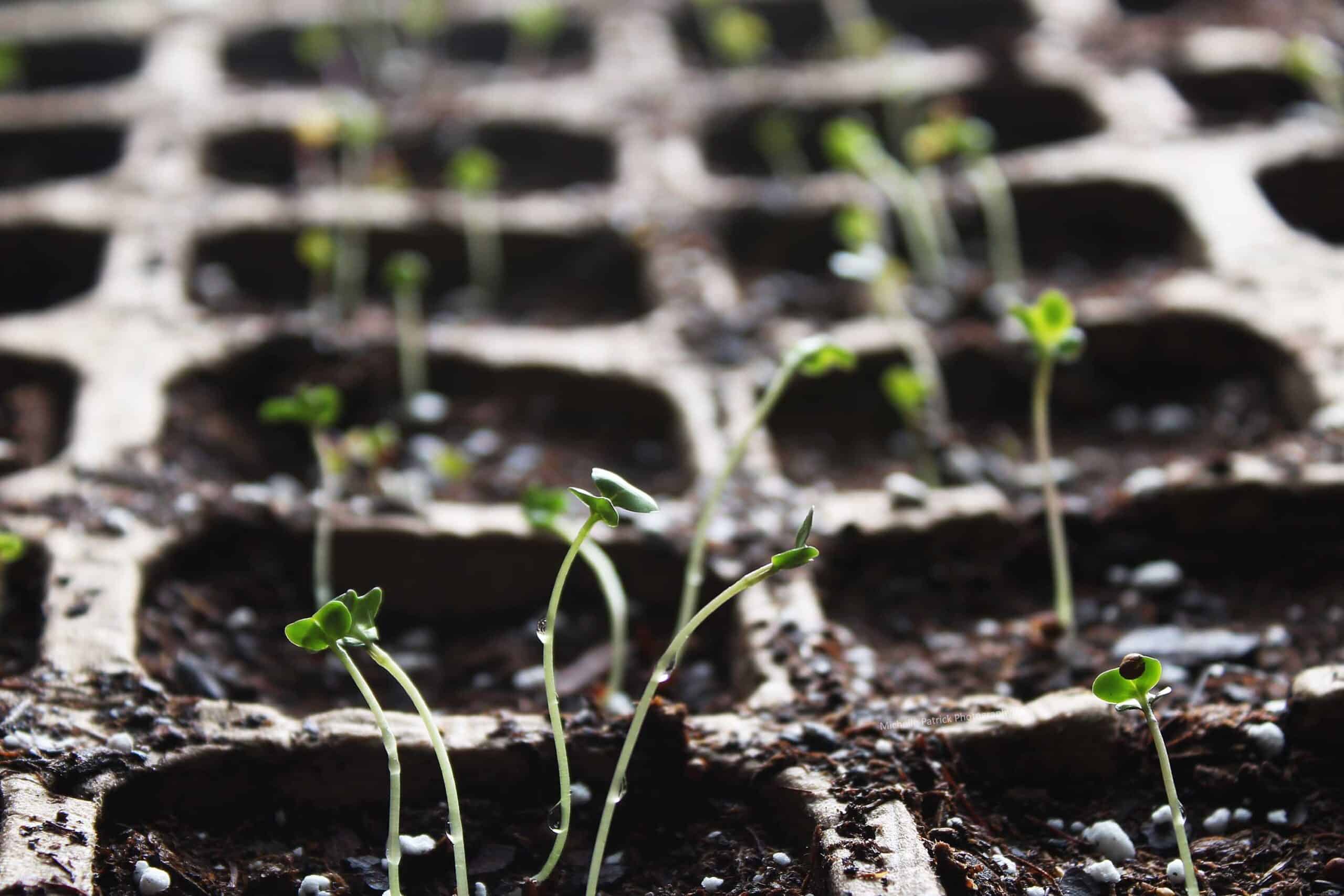
How to Propagate Artillery Plant
Another way to grow a new Artillery Plant is via stem cuttings. This process should be done during a warm spring day to reduce the chance of shock. The steps for doing this are as follows:
- Using a sterile cutting utensil, cut off a healthy 3-inch stem that includes at least two leaves
- Dip the bottom of the stem cutting in a rooting powder
- Plant the cutting in a container filled with a peat-based potting soil
- Water the potting soil and keep it moist but not soggy
- Set the container in a warm spot that gets plenty of bright, indirect sunlight
- Care for as a regular Artillery Plant
Artillery Plant Growing Conditions
Since this plant will require high temperatures and humidity levels, you may want to invest in the following equipment:
This native of South and Central America requires warmth and humidity. It should be placed in an area where temperatures range between 70 and 75 degrees Fahrenheit during the day. Temperatures at nighttime, however, can get to about ten degrees cooler. Combined with high temperatures is the need for high humidity levels of at least 50%.
How to Plant Artillery Plant
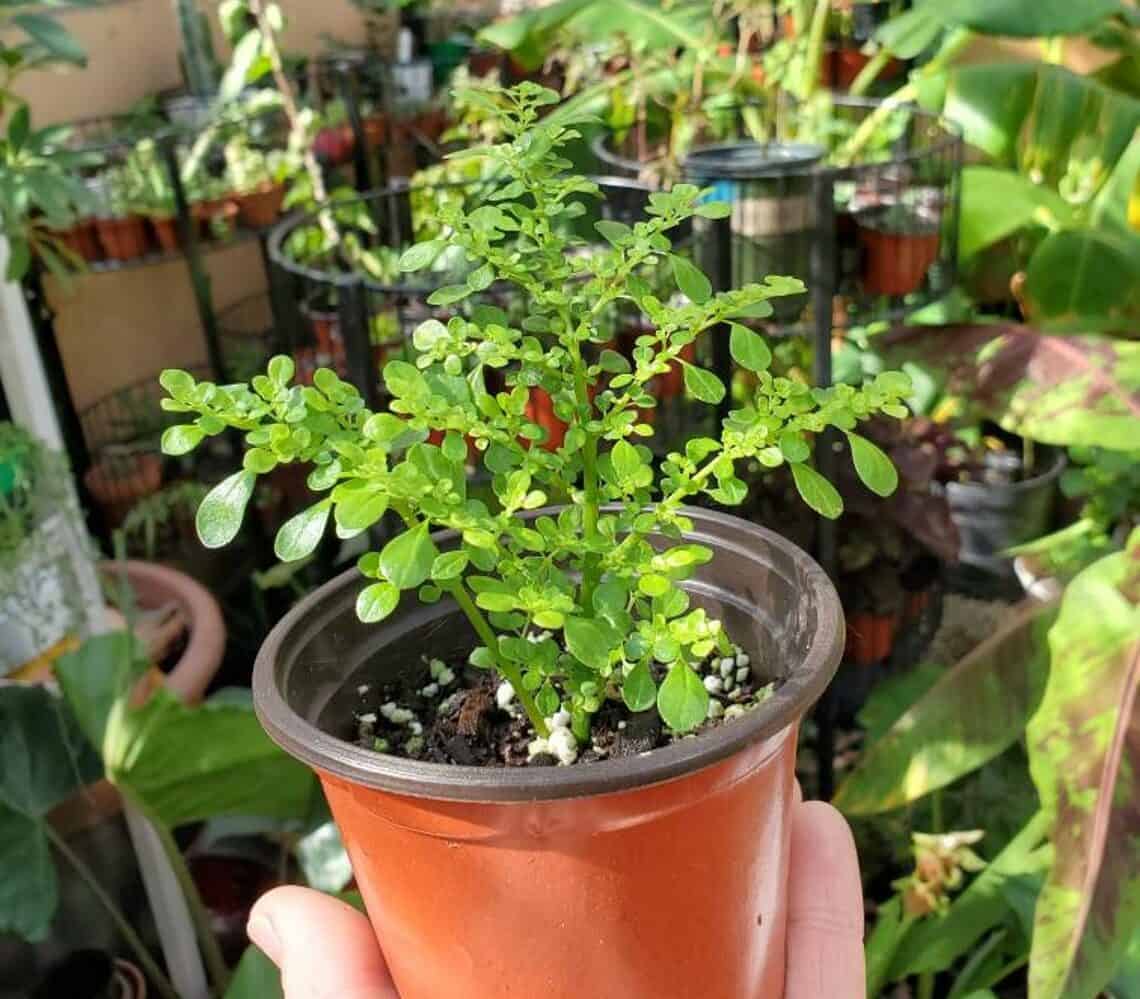
Most types of plants should be repotted every two to three years. If you notice that your plant has stagnated in its growth, has roots extending from its container’s drainage holes, has been in the same potting soil for several years, or requires more water than normal, it is time to move the plant into a new home.
When this time comes, keep these things in mind:
- Transplant in the springtime to reduce the chance of shock
- Do not fertilize the plant after repotting it since can produce more harm than good
- Do not touch the root system since this can be damaged very easily
The steps for repotting an Artillery Plant are:
- Fill a new container that is two inches larger than its previous container with potting soil
- Create a hole in the soil for the plant to set inside
- Carefully remove the plant from its current container by laying the plant on its side and then pulling the pot off the root system
- Gently dust off any excess soil from its roots
- Set the plant into the hole in the new container
- Spread the soil around so that the plant is secure in its new container
- Water the plant
- Set it in a warm spot with indirect sunlight
Artillery Plant Potting & Soil
Just getting the right type of soil right will not be enough to care for your plants. Remember, to get a plant container that suits each type of plant you are growing. In the case of an Artillery Plant, you will need a plant container that will drain off excess water.
The type of potting soil that these plants need is both well-draining and full of rich organic matter.
The following are some really great soil options to use with Pilea plants:
- All-Purpose Houseplant Potting Soil Mix
- Custom-Blend Organic Indoor Plant Potting Soil
- Simple Potting Soil for House Plants
- African Violet Potting Mix
Artillery Plant Water Requirements
One of the best ways to learn how to water properly water a plant is by using a plant watering app. With an app, you can track when a plant has been watered, set reminders to water it, and get answers to common plant care questions. This is one of the many ways modern technology is a great convenience.
The important thing to remember about watering an Artillery Plant is that too much water is more harmful than too little water. The reason for this is because overwatering will increase the risk of root rot, which can eventually kill the plant.
To prevent overwatering any plant, always test the plant’s soil before watering it. Every plant will need a different level of soil moisture, but for an Artillery plant, if the top inch of its soil is dry, it can use a drink; however, if the soil is still moist, the plant does not need any more water. Different seasons of the year will require different amounts of water. Winter usually requires fewer watering sessions than either spring or summer.
When you do water the plant’s soil, be sure to water it evenly and thoroughly so that excess water flows from the container’s drainage holes. You can also water it in the soak and dry method, but be sure to allow the soil time to fully drain off excess water.
Artillery Plant Light Requirements
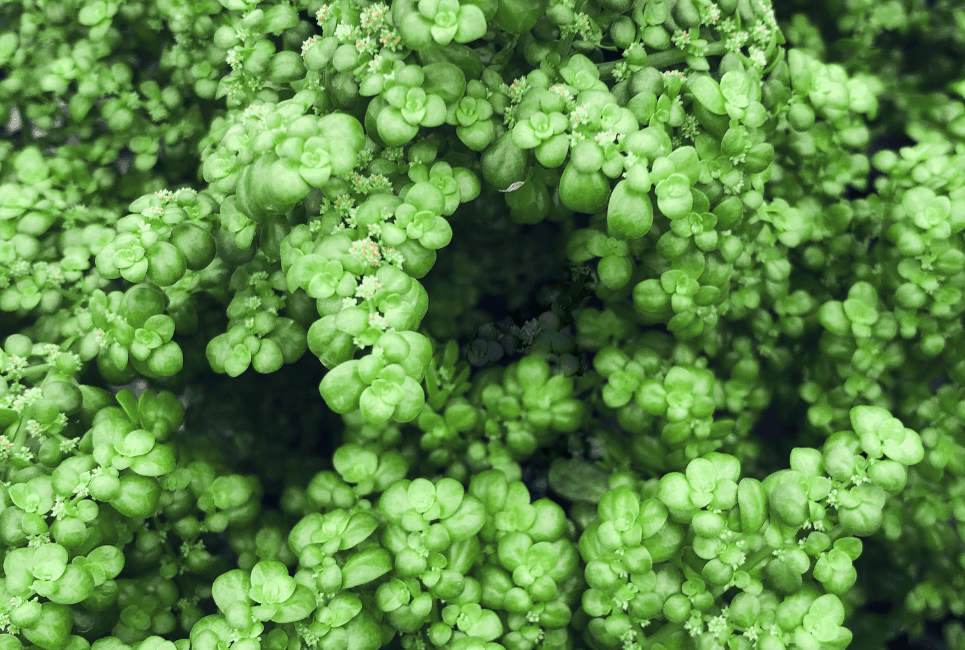
Selecting a spot with the appropriate amount of sunlight is another opportunity for modern technology to assist in the realm of gardening. A light meter is an excellent tool to use indoors to ensure that plants are receiving adequate amounts of sunlight to suit their needs.
Artillery Plants grow best when set in a spot that gets plenty of bright, indirect sunlight. They can withstand a little direct sunlight in the morning, but should never be set in full sunlight during hot afternoons.
Best Artillery Plant Fertilizer
These plants should not be fertilized during autumn or winter; however, they do benefit from once-a-month feedings during spring and summer. Choose a liquid houseplant fertilizer, such as this All-Purpose Plant Fertilizer by Aquatic Arts, and dilute it to half strength for each feeding.
Best Artillery Plant Companion Plantings
Not only do companion plants provide an aesthetic appeal as home and garden decorations, but they also benefit one another by sharing extra humidity. Look beyond the outward and consider the kind solidarity of a possible companion plant for your Artillery Plant. Here are just three examples of excellent companion plants from which you can choose:
Pilea Involucrata
Also known as the Friendship Plant, this is a unique-looking and unfussy option that will not only befriend your Artillery Plant but you as well. It grows fast and can vine over the ground when cared for well, a feature which lends itself to being pruned and presented as gifts to friends. If your interest is piqued, take a moment to review this plant’s pros and cons.
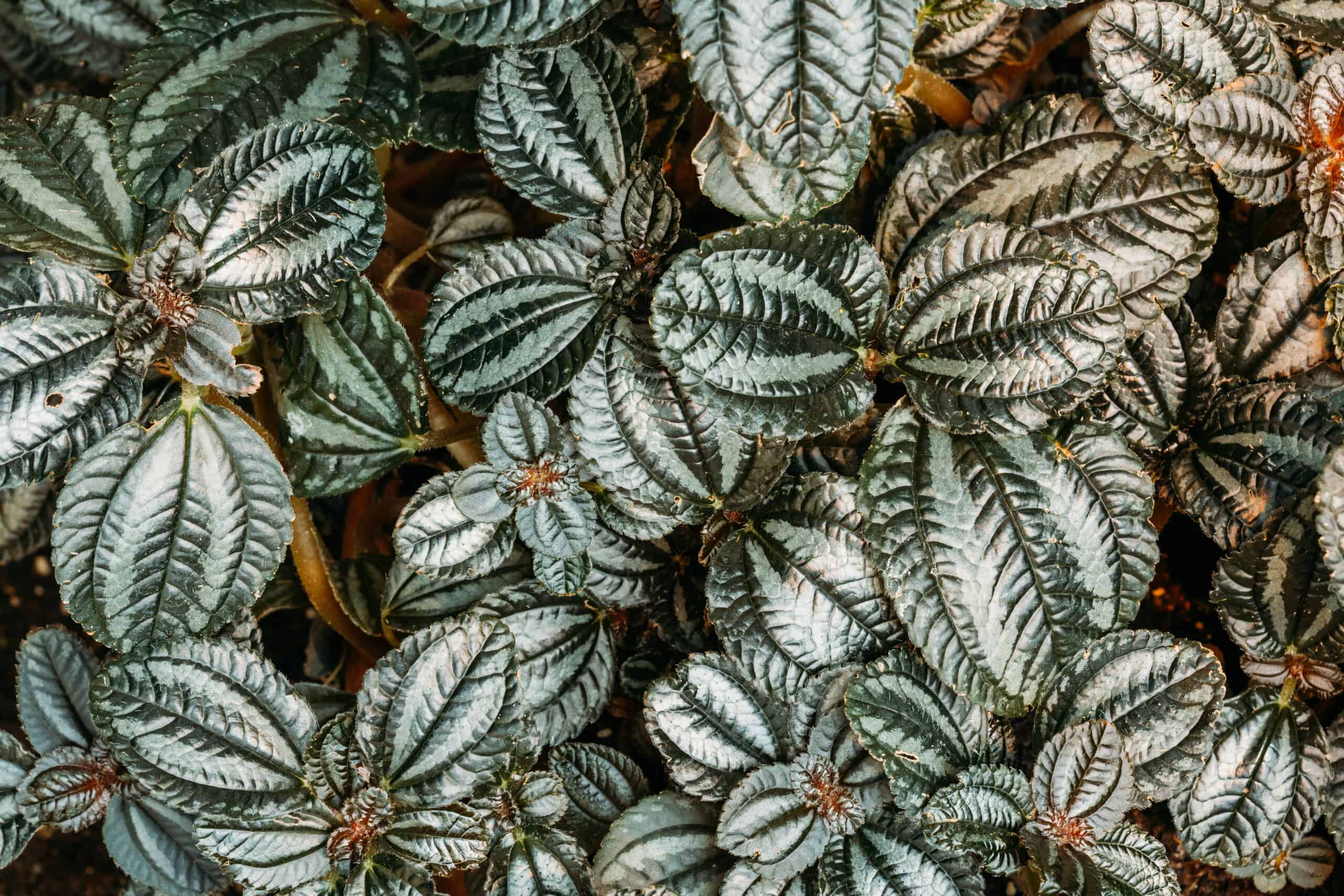
Pros:
- Friendship Plant has many of the same care requirements as Artillery Plants
- Friendship Plant is easy to care for and propagate
- Friendship Plant is a colorful and unique-looking plant
- Friendship Plant is not toxic
Cons:
- Friendship Plant does require pruning to keep it from overgrowing a garden or plant container
- Friendship Plant is not cold-hardy
Calathea Musaica
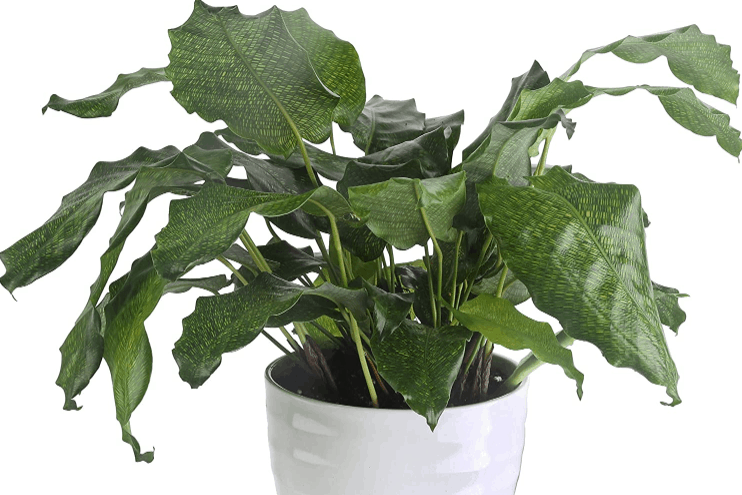
This is a variety of Calathea that features long oval leaves that feature an unusual and unique mosaic pattern. It may be a slightly fussy plant, but its good looks will do more than makeup for that.
Pros:
- Calathea Musaica is an unusually beautiful plant
- Calathea Musaica is not toxic
Cons:
- Calathea Musaica can be fussy about its needs
Satin Pothos
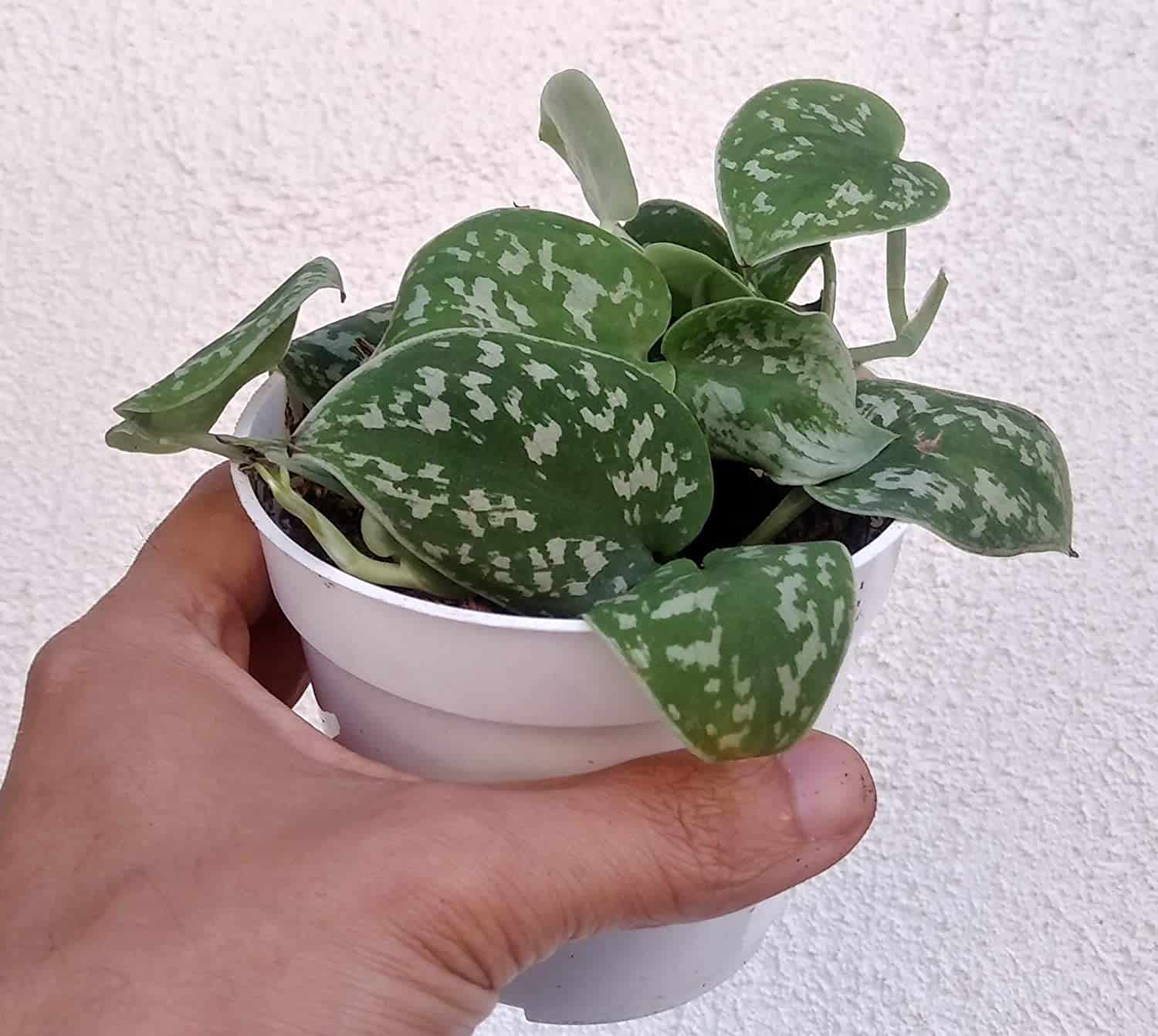
Pothos plants are famously unfussy. A Satin Pothos plant will provide your Artillery Plant with humidity, companionship, and complimentary tropical beauty without any extra gardening hassles.
Pros:
- Satin Pothos is very easy to grow and care for
- Satin Pothos has care requirements that are similar to those of Artillery Plants
- Satin Pothos can also be trained to grow as a vine
Cons:
- Satin Pothos is toxic
Artillery Plant Diseases and Common Problems
When you are knowledgeable about what issues are faced by each of your plants, you are well prepared to care for them. This type of knowledge can help you prevent pest infestations or disease infections and help you treat plants that are being attacked by pests and diseases. Here are the most common issues faced by Artillery Plant:
Leaves with Brown Spots
This could be a sign that the plant has been exposed to direct sunlight, has received too little humidity, or has been over-fertilized. It will be a process of elimination to determine what is causing the brown spots on its leaves.
- A plant that is exposed to a lot of direct sunlight should be moved to a shadier area.
- A plant that does not have enough humidity should be moved to a more humid area or given a humidifier.
An over-fertilized plant may need to have its soil saturated with water.
Mealybugs
Evidence of an infestation of mealybugs is small white spots that look like cotton on leaves and stems. To deal with an infestation of mealybugs, follow these steps:
- Spray a solution of alcohol and water on the leaves
- Rub the leaves with a cotton ball
- Coat the leaves in neem oil or insecticidal soap every few days
Root Rot
Evidence of this problem is leaves that have turned brown or black. To treat this problem, let the soil dry out completely and set the plant in a place where it will get plenty of airflows. If it is still struggling with too much water in its container, follow these steps:
- Remove the plant from its container
- Wash off all the dirt from its roots
- Cut off any rotten roots
- Replant the plant in a clean container with fresh soil
- Wait to water it for a few days
Spider Mites
This type of infestation looks like webbing spread over the plant’s leaves and stems. To deal with this type of infestation, follow these steps:
- Spray the plant with a mixture of 1 quart of warm water, 1 tsp. of dish soap, and 2 tsp. Of neem oil
- Wipe off the leaves and stems
- Repeat as necessary
Artillery Plant Treatments and Maintenance
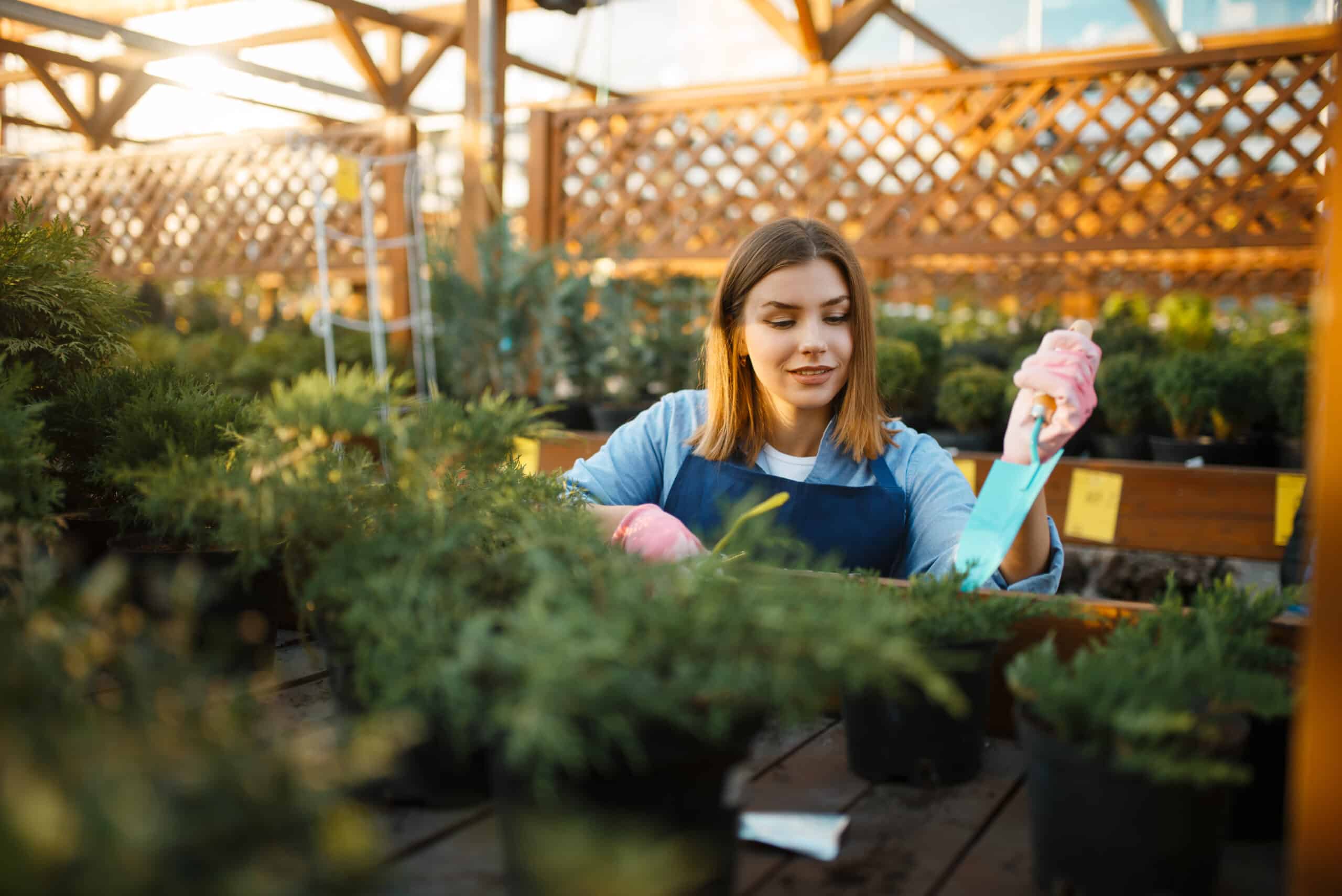
The best way to prevent harmful diseases and pest infestations is to provide the plant with regular care and cleaning. Here are a few tips to help keep your plant as healthy as it can be.
- Check it for signs of disease and infestations regularly, and treat them quickly.
- Clean the plant’s leaves regularly with neem oil.
- Learn how to properly water and feed your plant.
- Make sure your plant is set in an area with adequate amounts of sunlight, heat, and humidity.
- Mix diatomaceous earth into the soil of potted plants.
Where to Buy Artillery Plant Seeds Online
Seeds for this plant are difficult to find. When you search for seed sellers, look for those who have good ratings and price their seeds between $1 and $2 per seed. A few online shops that are a good place to begin your search are:
Where to Buy Mature Artillery Plant Online
When you are searching for an Artillery Plant, start with Etsy. This is a great website to look for plants from shops that have been rated and reviewed by other customers. This website also offers you an opportunity to ask the sellers questions. It’s a win-win situation.
FAQs
Question: Is Artillery Plant Toxic?
Answer: This is not a toxic plant.
Question: Which USDA Hardiness Zone Can Artillery Plant be Planted In?
Answer: It is safe to plant an Artillery Plant in zones 11 to 12. If you live in a zone that is lower than this, the Artillery Plant should be planted in a container that can be transferred indoors during cold weather.
Question: Does Artillery Plant Produce Blooms?
Answer: Yes, the blooms are small and green. These plants are not grown for their blooms since they are not very aesthetically pleasing; however, the male blooms discharge pollen into the air, creating a cloud. This is how the plant received its common name.
In Conclusion
Artillery Plant may be underrated and often overlooked, but it shouldn’t be. This plant is cute and easygoing, which means, it is an awesome plant for every home and garden.

